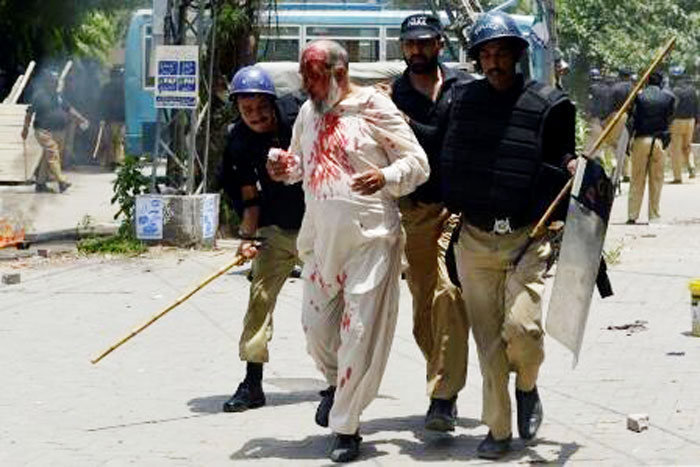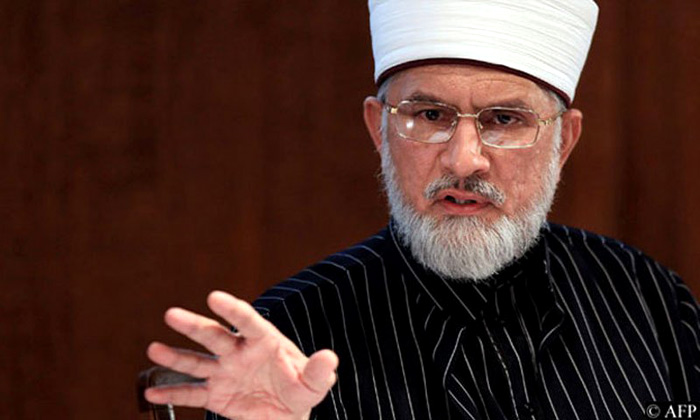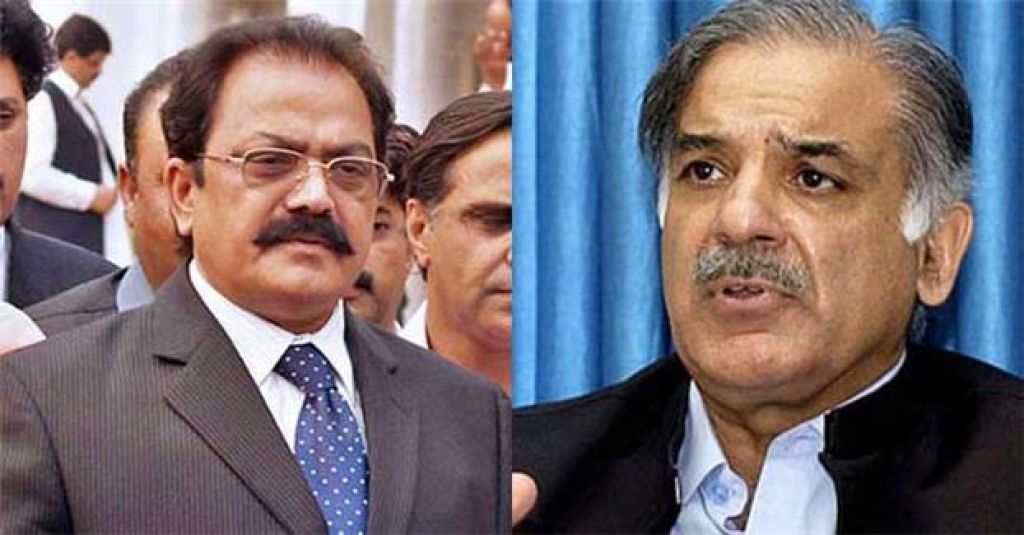
On June 17, 2014, a violent clash took place between Punjab Police and Pakistan Awami Tehreek (PAT) activists as the police's anti-encroachment squad launched an operation to remove barricades from the roads leading to the residence of PAT founder Muhammad Tahir-ul-Qadri. The incident is often termed as the "Model Town Massacre" that resulted in the death of several PAT workers along with hundreds wounded. PAT leaders claimed that they had showed a court order to police officials that stated the need of security issuance due to terrorism.
The incident became the center of headlines for many news channels, broadcasting the 11-hour standoff and protests live. It is still unclear how the standoff began, as both the parties blame each other for it. However, Qadri has denied any claims of his protesters attacking the police.
PAT chief had vowed to avenge the death of his political workers by ensuring that Nawaz Sharif and his brother Shahbaz Sharif were held accountable.
The Inquiry
Following the incident, the then Punjab Chief Minister (CM) Shehbaz Sharif ordered the formation of a judicial commission. However, PAT chief rejected the judicial commission on June 23, 2014, stating that an impartial judicial inquiry could not be done under Pakistan Muslim League's (PML-N) government. Earlier, Qadri had urged for an investigation team to be constituted comprising representatives from Inter-Services Intelligence (ISI), Military Intelligence (MI), Intelligence Bureau (IB) and a judicial commission of three Supreme Court (SC) Judges to probe into the incident.

An FIR was registered against 21 persons including Prime Minister Nawaz Sharif and Punjab Chief Minister along with other PML-N leaders on August 28, 2014, responsible for the death of 11 PAT workers.
On September 10, 2014, Punjab government constituted a one-man committee to give an expert opinion on the report of the Tribunal of Inquiry on Minhaj-ul-Quran Complex incident as per PAT's petition filed in the LHC. According to the review report by Justice Khalilur Rehman Ramday, the anti-encroachment move was based on legal grounds rather than being politically motivated by the then Law Minister Rana Sanaullah. Although the review report was examined without the supporting documents that were demanded but not provided by the concerned authorities.
Later on a Joint Investigation Team (JIT) was constituted that comprised 10 members, headed by Additional Inspector General Dr Arif Mushtaq Chaudhry. The other 9 members were representatives from MI, IB, ISI, police, Special Branch and Counter-Terrorism Department.
The JIT's report was stated to be inconclusive as there were many inconsistencies within the provided evidence. Also, that many facts were ignored in the investigation of the Chain of Command.
Since 2017
The Model Town clash between Pakistan Awami Tehreek (PAT) and Punjab Police is once again the center of headlines as the Supreme Court (SC) on November 19 ordered formation of a larger bench to establish Joint Investigation Team (JIT) to probe into the 2014 Model Town incident.
The bench will be headed by Cheif Justice of Pakistan (CJP) Saqib Nisar along with others including Justice Asif Saeed Khosa, three other SC Judges and representatives from other provinces to ensure an impartial investigation. The case will begin its proceedings from December 5, 2018.
Earlier on November 17, SC had issued notices to former premier PML-N president Shehbaz Sharif along with 137 others nominated in a case lodged by PAT.
PAT leader Khurram Nawaz Gandapur had in October filed a petition at the SC to speed up Anti-Terrorism Court's (ATC) proceedings as it was unable to wind up the trial within the three-month deadline previously set by the SC, directing the ATC to hear the case on daily basis.
The case was earlier proceeding at the LHC, after PAT had challenged ATC's verdict of declaring Sharifs and the 12 parliamentarians innocent in the case. A full bench was constituted after CJP's Suo Moto notice on the delayed proceedings of the 2014 incident.

The LHC under a three-member bench headed by Muhammad Qasim Khan, Justice Alia Neelum and Justice Sardar Naeem reserved the verdict on Model Town case in February, later on announcing the verdict on September 27 with a 2-1 majority against ATC's decision. Punjab government on the directive of the LHC made the Model Town incident inquiry report by Justice Baqir Najfi public. According to the report, the police had tried to cover up facts on who exactly gave the order on opening fire on the protesters.
Qadri, had summoned an All-Parties Conference (APC) in December 2017, forming a steering committee of members from various opposition parties including MQM, PPP and PML-Q. The APC had given a deadline to Shehbaz Sharif and Rana Sanaullah to resign from their posts by January 7, 2018.
Ignored Facts
The Model Town incident, a case that has been dragged to a point that the truth can no longer be established even if the state complies with all the JIT and inquiry reports. It is thought-provoking that the system itself is the reason that justice is delayed and denied as facts are ignored.

Similarly, this case is an example of justice delayed, with inconsistencies all over it. As per a detail of the chain of events, it is pertinent to raise some questions.
These are some of the questions that linger on since the day of the incident, even though the very incident was an unfortunate chain of events that should be condemned without any doubt. Now the case rests upon yet another bench/JIT that will decide what went wrong and where. Let's hope that justice is not only served, but the culprits also made an example so that such tragedies do not repeat.
The incident became the center of headlines for many news channels, broadcasting the 11-hour standoff and protests live. It is still unclear how the standoff began, as both the parties blame each other for it. However, Qadri has denied any claims of his protesters attacking the police.
PAT chief had vowed to avenge the death of his political workers by ensuring that Nawaz Sharif and his brother Shahbaz Sharif were held accountable.
The Inquiry
Following the incident, the then Punjab Chief Minister (CM) Shehbaz Sharif ordered the formation of a judicial commission. However, PAT chief rejected the judicial commission on June 23, 2014, stating that an impartial judicial inquiry could not be done under Pakistan Muslim League's (PML-N) government. Earlier, Qadri had urged for an investigation team to be constituted comprising representatives from Inter-Services Intelligence (ISI), Military Intelligence (MI), Intelligence Bureau (IB) and a judicial commission of three Supreme Court (SC) Judges to probe into the incident.

An FIR was registered against 21 persons including Prime Minister Nawaz Sharif and Punjab Chief Minister along with other PML-N leaders on August 28, 2014, responsible for the death of 11 PAT workers.
On September 10, 2014, Punjab government constituted a one-man committee to give an expert opinion on the report of the Tribunal of Inquiry on Minhaj-ul-Quran Complex incident as per PAT's petition filed in the LHC. According to the review report by Justice Khalilur Rehman Ramday, the anti-encroachment move was based on legal grounds rather than being politically motivated by the then Law Minister Rana Sanaullah. Although the review report was examined without the supporting documents that were demanded but not provided by the concerned authorities.
Later on a Joint Investigation Team (JIT) was constituted that comprised 10 members, headed by Additional Inspector General Dr Arif Mushtaq Chaudhry. The other 9 members were representatives from MI, IB, ISI, police, Special Branch and Counter-Terrorism Department.
The JIT's report was stated to be inconclusive as there were many inconsistencies within the provided evidence. Also, that many facts were ignored in the investigation of the Chain of Command.
Since 2017
The Model Town clash between Pakistan Awami Tehreek (PAT) and Punjab Police is once again the center of headlines as the Supreme Court (SC) on November 19 ordered formation of a larger bench to establish Joint Investigation Team (JIT) to probe into the 2014 Model Town incident.
The bench will be headed by Cheif Justice of Pakistan (CJP) Saqib Nisar along with others including Justice Asif Saeed Khosa, three other SC Judges and representatives from other provinces to ensure an impartial investigation. The case will begin its proceedings from December 5, 2018.
Earlier on November 17, SC had issued notices to former premier PML-N president Shehbaz Sharif along with 137 others nominated in a case lodged by PAT.
PAT leader Khurram Nawaz Gandapur had in October filed a petition at the SC to speed up Anti-Terrorism Court's (ATC) proceedings as it was unable to wind up the trial within the three-month deadline previously set by the SC, directing the ATC to hear the case on daily basis.
The case was earlier proceeding at the LHC, after PAT had challenged ATC's verdict of declaring Sharifs and the 12 parliamentarians innocent in the case. A full bench was constituted after CJP's Suo Moto notice on the delayed proceedings of the 2014 incident.

The LHC under a three-member bench headed by Muhammad Qasim Khan, Justice Alia Neelum and Justice Sardar Naeem reserved the verdict on Model Town case in February, later on announcing the verdict on September 27 with a 2-1 majority against ATC's decision. Punjab government on the directive of the LHC made the Model Town incident inquiry report by Justice Baqir Najfi public. According to the report, the police had tried to cover up facts on who exactly gave the order on opening fire on the protesters.
Qadri, had summoned an All-Parties Conference (APC) in December 2017, forming a steering committee of members from various opposition parties including MQM, PPP and PML-Q. The APC had given a deadline to Shehbaz Sharif and Rana Sanaullah to resign from their posts by January 7, 2018.
Ignored Facts
The Model Town incident, a case that has been dragged to a point that the truth can no longer be established even if the state complies with all the JIT and inquiry reports. It is thought-provoking that the system itself is the reason that justice is delayed and denied as facts are ignored.

Similarly, this case is an example of justice delayed, with inconsistencies all over it. As per a detail of the chain of events, it is pertinent to raise some questions.
- If the police were there on sheer political motivation then why was there a standoff for 11 hours?
- If the PAT workers were not armed and didn’t retaliate then who shot the police officials?
- If PAT had already taken a stay order, then why weren’t the complaints registered by the residents challenged legally?
- If PAT had obtained a legal document justifying the barricades, then why was there any need to call workers to protest and retaliate against the police?
- If no one ordered the firing, how did it begin?
- If the orders to fire at the protesters were never passed, did the government take any action against those who fired?
These are some of the questions that linger on since the day of the incident, even though the very incident was an unfortunate chain of events that should be condemned without any doubt. Now the case rests upon yet another bench/JIT that will decide what went wrong and where. Let's hope that justice is not only served, but the culprits also made an example so that such tragedies do not repeat.
